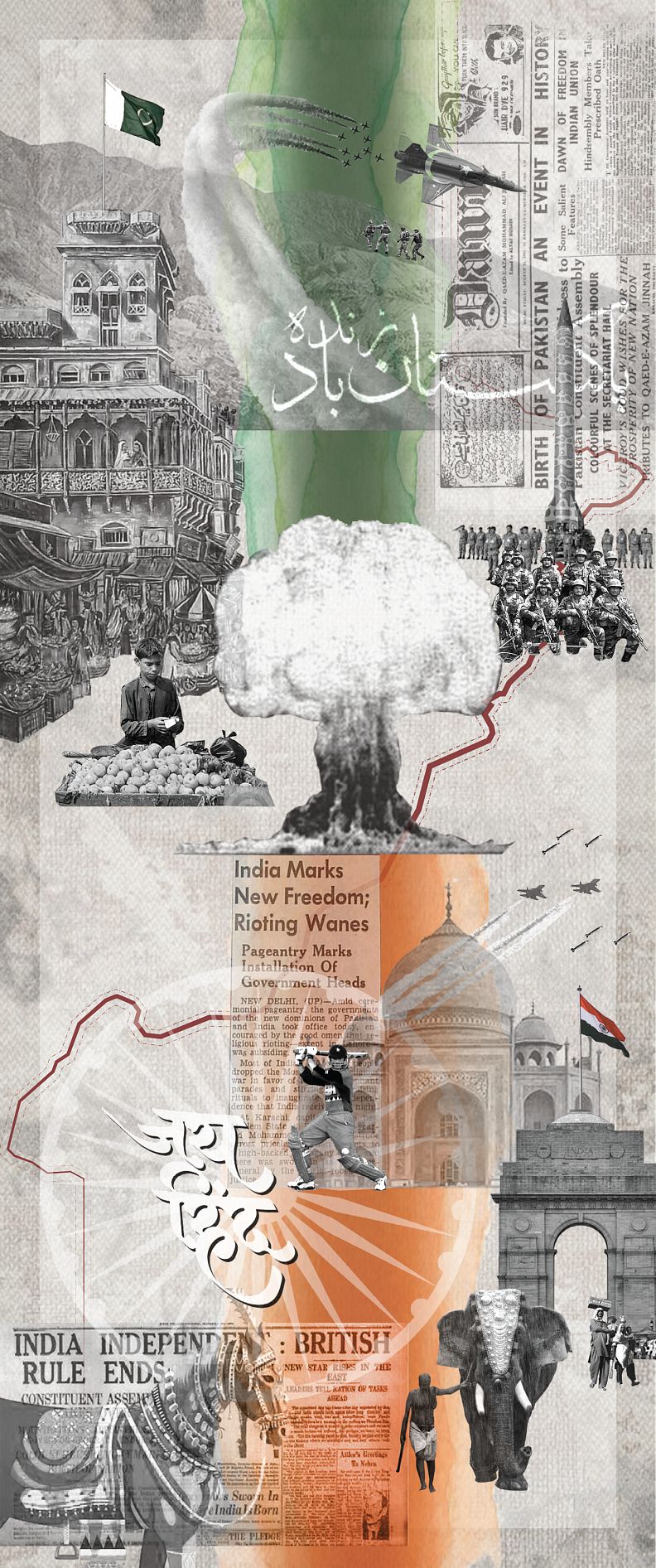Blurring Boundaries

Project idea
The project “Blurring Boundaries” tells the tale of two countries that have long been separated by land, religion and most of all, politics - India and Pakistan. Who once stood as one, now harm their own with an unending war, air strikes, and nuclear weapons in progress. Rivalries between countries, whether it is for land or religion, cost us so much more than we realize in the heat of nationalism. India and Pakistan have a history of growing rivalry, from Kashmir to cricket, from Hinduism to Islam, the toxic patriotism runs deep, even in an average Indian or Pakistani. This project aims to memorialize what has been lost and the idea of what could’ve been had we remained one. Starting at the two points in each of the countries where the weaponry is tested, and destruction takes place to the border that keeps us divided.
Project description
From one point to the other, the project forms a journey that connects people from the two countries. It occupies five distinguished points. In Pakistan, the first one is at the top of the mountain, and the second is within a forest. As for India, the point where you begin the journey is in the desert, and the next point is located at the lake. The final point for both countries is at their border. The project starts from two extreme ends and meets at the center.
The initial stops are sites that were used for nuclear testing and are still contaminated with radiation, so the site is only safe when experienced from a car at a certain distance. These spaces memorialize the destruction that took place. The next part of the journey for the Pakistanis and Indians happens at the forest and lake, respectively. These two spaces are meant to be experienced by foot as they are contemplation spaces. And finally, at the border, the boundary literally intertwines so you can see and hear each other across countries.
The overarching idea is to create spaces in both countries that follow a similar journey and ultimately bring them to the same place (the border) where each one can be reminded of the fact that they have faced a similar past (in terms of the project and war history) and live in the same reality, hoping for a better future.
Technical information
In order to establish a relationship between all five projects, we use a common form and material. The design of the project is bound within the circle as it symbolizes both destruction and peace. Whereas, the metal mesh adds a divisional and structural quality while allowing visual permeability.
At the mountain (route 1, stop A), the project slices through the peak to create an open to sky valley like condition that has gabions as retaining walls. Then, in the forest (route 1, stop B), we have a slope that takes you up closer to the canopy of the trees. Next, at the desert (route 2, stop A) we have created mound-like tunnels which are lined with lead, so one can get a closer look at the bomb crater safely. And at the desert lake (route 2, stop B), we have created a rock path on which one can walk over the lake. At the end of the journey, as you reach the border (route 1/2, stop C) the boundaries between the two countries get blurred. Here we have an intertwining path that goes below ground level. As an Indian you have the opportunity to be on Pakistani land and vice versa. From where the actual boundary begins to slope downwards, we have foliage that is dense and fully blocks the view, but as you move through and around the project, the foliage fades out, allowing you to see and touch each other through the fence - bringing the two countries one step closer to unity.
Documentation
Show PDF 1Show PDF 2Show PDF 3Show PDF 4Show PDF 5Show PDF 6Show PDF 7Show PDF 8Show PDF 9Show PDF 10Show PDF 11Show PDF 12Show PDF 13Show PDF 14Show PDF 15Show PDF 16


















